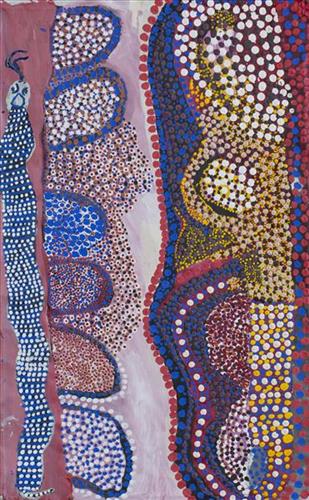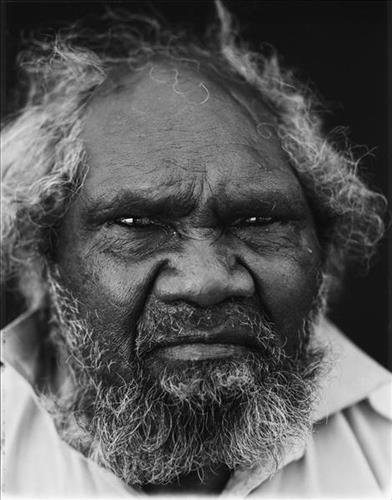111581692882
Jilukurru (Killagurra Springs, Canning Stock Route, Well 17)
“We were there long time as kid, playing around. I been walking around here, young fella. There’s big water there, running water. Water there belongs to that jila (snake), he belongs to there. That jila makes you scared if you’re a stranger messing around in the water. The water will go right up, and you better get out from there!
Wati Kujarra (Two Goanna Men). Youngfella, poor bugger. [Here at] Jilukurru, sitting down this side you can see their ngarnkurrpa (beards) right in the hill there. That’s their main place. He been youngfella them two, chasing all the kangaroo. They gone away from Jilukurru Country, long way away, right to Roebourne, to that lake there. They not coming back, they gone one way.
This is my Country, good Country. Long way away on the Canning Stock Route. We used to stop there [and] go hunting. No road then, we walking around. No car, only camels.”
– Yunkurra Billy Atkins
Yunkurra’s Country encompasses some of the most important and dangerous sites in the Western Desert, including Jilukurru (Killagurra Springs, Canning Stock Route Well 17) and Kumpupirntily (Kumpupintily, Lake Disappointment). Jilukurru is a yinta (permanent spring) located in a complex of gorges and valleys yapurra (west) of Kumpupirntily. Jilukurru lies in the heart of Yunkurra’s ngurra (home Country, camp); he grew up in this area. This spring was an important site for meetings during the pujiman (traditional, desert dwelling) era.
As Yunkurra describes, Jilukurru is also sacred for its relation to the Jukurrpa (Dreaming) narrative of the Wati Kujarra. For this reason, access to the site is respectfully restricted. Wati Kujarra is one of the key foundational narratives for Western Desert people. Half men, half goanna, the Wati Kujarra were responsible for the creation of many land features in Martu Country and beyond as they travelled, hunted and burned Country together. Wati Kujarra is a ngurlu (sacred, taboo) men’s story, and much of the content is only shared with initiated men.
At Jilukurru, the Wati Kujarra lived for a time. Here they also trimmed their ngarnkurrpa. On one of the rocky headlands of the range system, the form of the two men can be seen, with their long beards rolling down the escarpment. After the Wati Kujarra left Jilukurru the site became home to an ancestral jila.




